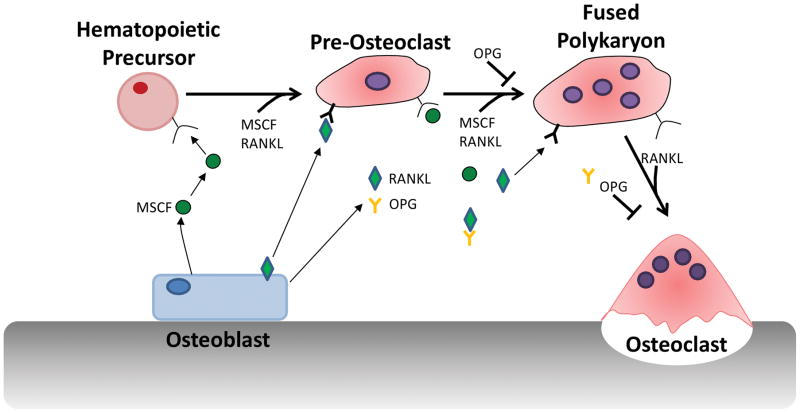Fig 2. Osteoclast Differentiation.
Osteoclast differentiation is the process by which mononuclear cells undergo fusion into the multinucleated osteoclast. Three cytokines are critical for osteoclast differentiation: MCSF, RANKL and osteoprotegerin (OPG), a soluble decoy receptor for RANKL (105–108). In the initial stages of differentiation, precursor cells proliferate in response to MCSF signaling through its receptor c-FMS (109). RANKL, expressed as a membrane bound or soluble form then binds to its receptor, receptor activator of nuclear factor κB (RANK), present on the precursor cells (110,111). This results in the transcription and activation of numerous osteoclast specific genes; cathepsin K, tartrate resistant acid phosphatase (TRAP; an osteoclast marker), calcitonin receptor and B3 integrin (112). The precursor cells then migrate along chemokine gradients and fuse together to form the multinucleated osteoclast. Control of osteoclast differentiation is via the soluble receptor OPG, which competes with RANK for RANKL binding, thus inhibiting OC differentiation (113,114).

